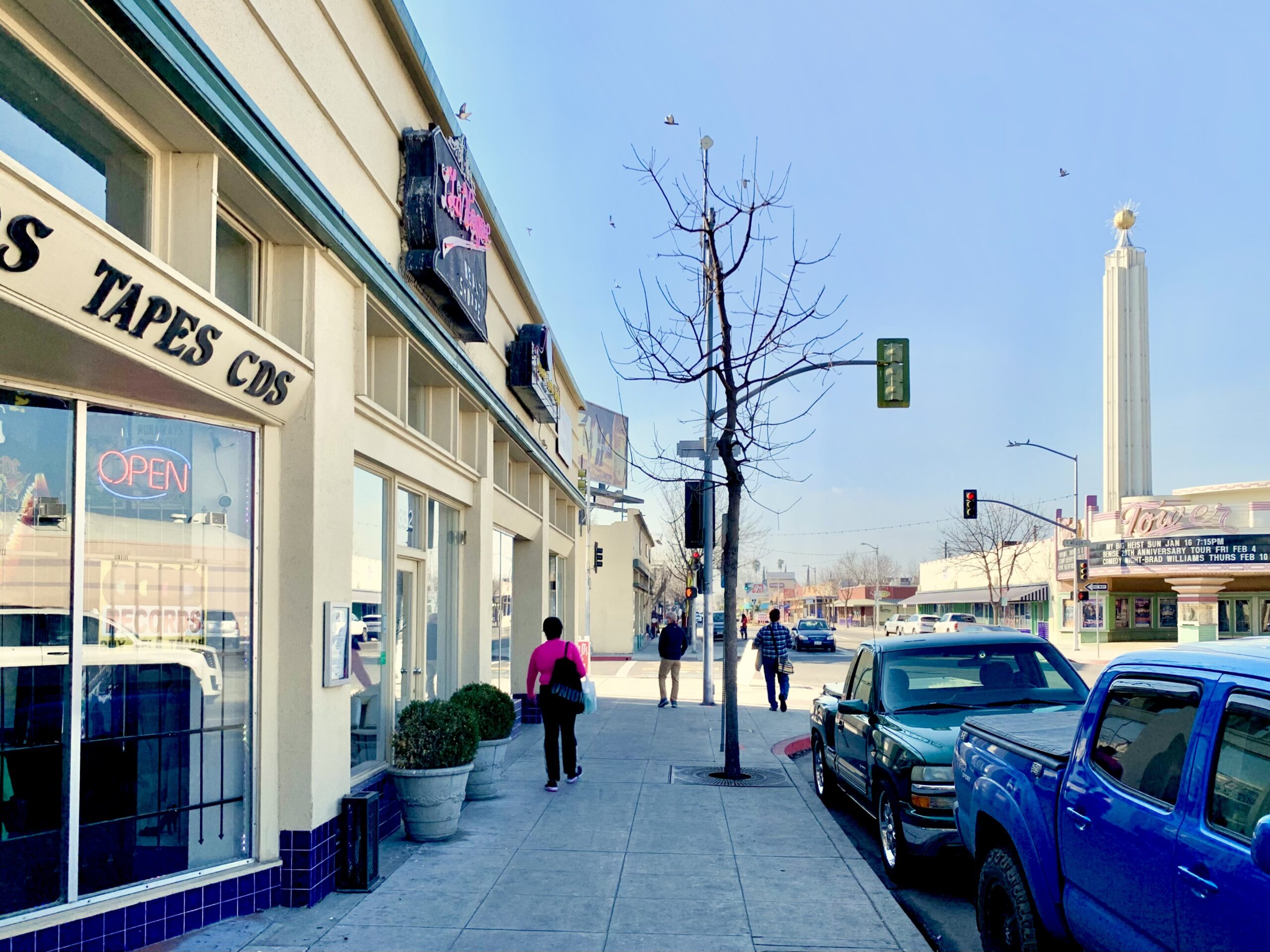The zoning codes of the 1950s and 60s no longer address the needs of the modern city. Many cities are unhappy with the development that they are receiving are are not getting any development in areas that need it. Archaic codes may be to blame. ZUS founder Dan Zack has years of experience in modernizing and implementing zoning codes so that they deliver the results that the community wants. He has also worked extensively with form-based codes, which in many cases are a superior form of land use regulation than conventional zoning because they are focused on the form of new buildings and how they shape the public realm.
Examples of Zack’s form-based code and zoning work include:
Citywide Rezone
Year(s): 2016
Role: City Staff
Jurisdiction: City of Fresno

After the adoption of a groundbreaking new General Plan and an entirely new Development Code that could implement it, the City’s zoning map had to be addressed. All of the zoning directs that it featured had been repealed. The original strategy was to adopt a “crosswalk table” that would identify which of the new regulations in the Development Code would apply to each of the old zoning districts. However, since the old Zoning Map didn’t align with the new Planned Land Use Map, this would have created numerous conflicts with the General Plan. It was also proposed that the Zoning Map be updated project-by-project, which would obligate nearly every proposed project to endure a rezoning; this was unsuitable for staff and would force projects which complied with the General Plan’s vision to endure a needlessly expensive and slow process. Mr. Zack proposed to rezone then entire City at one time in order to reduce uncertainty for residents and developers, to maintain the momentum of the public outreach process of the General Plan and the Development Code, and to shorten the period of conflict between the General Plan and Zoning Map. This strategy was approved by the Mayor and a few months after the adoption of the Development Code over 135,000 parcels were rezoned, quickly bringing the planned land use and zoning of the entire city into consistency.
Additional Information:
Downtown Development Code
Year(s): 2014 to 2016
Role: City Staff
Jurisdiction: City of Fresno

The Downtown Development Code is the primary implementation tool for two planning documents: The Fulton Corridor Specific Plan and the Downtown Neighborhoods Community Plan, both developed by a consultant team lead by Moule and Polyzoides of Pasadena in conjunction with City staff. The original draft of the Code, also developed by the consultant team, had taken a very different direction from the Citywide Development Code which was being developed simultaneously by a different consultant team. Upon his hiring as Assistant Planning Director, Mr. Zack took over the Downtown Development Code project and completely re-wrote it as a chapter of the Citywide Development Code, standardizing language, graphics, and layout between the two documents and re-configuring the development standards to be more easily understood and followed by local entrepreneurs, builders, and planners while maintaining quality. After initial opposition from builders and some City Council members, extensive outreach resulted in adoption by the City Council. Several projects have been developed under the code, with entitlement times being as fast as 100 days.
Additional Information:
Citywide Development Code
Year(s): 2014 to 2016
Role: City Staff
Jurisdiction: City of Fresno
The Citywide Development Code (also known as the zoning ordinance) was an ambitious undertaking in every way. It sought to modernize the City’s land use regulation document, improve its usability, achieve consistency with State planning laws, adopt national best practices, and implement the infill-focused vision the General Plan. It was determined that the old code, initially adopted in 1962, would need to be repealed in its entirety and a new one written completely from scratch. Prior to Mr. Zack’s arrival in Fresno, Dyett and Bhatia served as consultants on the project, producing an outstanding draft document. Upon his hiring as Assistant Planning Director, he took over the Citywide Development Code project and completed it. He edited the entire document and rewrote several sections, including mixed use standards, industrial standards, mobile vendor standards, and legal non-conforming use standards. Mr. Zack also conducted a final round of extensive outreach with residents, the development industry, and elected officials, which resulted in adoption by the City Council.
Additional Information:
Mixed Use Zoning Update
Year(s): 2010 to 2011
Role: City Staff
Jurisdiction: City of Redwood City
While with Redwood City, Mr. Zack was on the staff team that worked with consultants Hogle-Ireland (now part of MIG) on new zoning districts that had to be created to implement the General Plan goals and policies for several key transportation corridors. The General Plan’s vision for these corridors—including El Camino Real, Woodside Road, Broadway, and Veterans Boulevard—was to transition them from car-oriented commercial strips to multi-modal streets were comfortable for motorists, transit riders, bicyclists, and pedestrians while intensifying the development pattern and blending the commercial uses with new housing and office uses. The new zone districts were adopted and have resulted in several high-quality infill development projects.
Additional Information:
Downtown Precise Plan, Version 2
Year(s): 2009 to 2011
Role: City Staff
Jurisdiction: City of Redwood City
The Downtown Precise Plan (DTPP) is a vision document, revitalization strategy, and form-based code which was designed to stimulate private development, particularly of well-designed pedestrian-oriented housing projects, in Redwood City’s 200-acre greater Downtown area. Developed by Freedman, Tung & Bottomley (now Freedman, Tung & Sasaki) in partnership with a staff team which included Mr. Zack, the first version of the DTPP was adopted in 2007 and immediately received positive attention, but was ordered to be repealed in 2009 by a court due to a CEQA lawsuit. Work began on a new version immediately thereafter. This time, the plan was completed in-house by City staff. Mr. Zack served as project manager; he created all of the new text and illustrations and redesigned the document’s layout. The second version of the DTPP was adopted in early 2011 and was not challenged. Developer interest materialized immediately, and within three years the DTPP had resulted in the entitlement of 1,239 housing units and 300,000 square feet of office space and within eight years 2,500 housing units had been produced. Today, Downtown Redwood City is one of the most active suburban downtowns in the San Francisco Bay Area. The DTPP was a runner up for the Form-Based Code of the Year award form the Form Based Code Institute in 2012.
Additional Information:
Downtown Precise Plan, Version 1
Year(s): 2004 to 2007
Role: City Staff
Jurisdiction: City of Redwood City
Mr. Zack was an integral member of the staff team that worked closely with the project consultant, Freedman, Tung, and Bottomley (now Freedman, Tung, and Sasaki), to develop this form-based code, which regulated land use and urban design in Redwood City’s 200-acre greater Downtown area. The first version of the Downtown Precise Plan (DTPP) won the award for best comprehensive plan in a small jurisdiction from the American Planning Association, Northern California Chapter. Work commenced on the in 2004. An intensive public participation process helped to create a framework for building heights, architectural styles, and activity centers upon which the consultant and staff team built the plan. An economic study was conducted by the Concord Group to ensure that the development standards in the plan would lead to the successful development of privately financed housing.
The DTPP Version 1 was adopted in 2007 and immediately received positive attention. Multiple entitlement applications were submitted within the first six months of the document’s life. Unfortunately, a property owner within the plan area filed a lawsuit invoking the California Environmental Quality Act (CEQA), alleging that the Environmental Impact Report (EIR) did not sufficiently assess the potential impacts of new development on historic resources and on shadows. During the time the case was being considered, and injunction prevent the City from approving entitlements for the Downtown area. While the City disagreed vehemently and fought the case, ultimately, they were unsuccessful and the plan was ordered to be repealed in 2009. Work began on a new version immediately thereafter.
Additional Information:
Downtown Parking Requirements Update
Year(s): 2005 to 2006
Role: City Staff
Jurisdiction: City of Redwood City
As it sought to intensify its Downtown as a dense, walkable, mixed-use urban center, Redwood City leadership realized that the conventional suburban parking requirements that governed the area were out of step with this goal. Mr. Zack was asked to develop new parking requirements for Downtown Redwood City and served as the primary author of the implementing ordinance. Key features of this ordinance include reduced parking ratios, a unique blended commercial ratio, parking maximums, shared parking incentives, and an in-lieu fee program. This ordinance was an important factor in the successful launching of several Downtown businesses and development projects which could not have moved forward under the old requirements. All work was conducted in-house without consultant support.
Additional Information:
Tower District Specific Plan Design Guidelines
Year(s): 2001 to 2004
Role: Consultant (pro bono)
Client: City of Fresno

Mr. Zack co-authored this document for the historic Tower District neighborhood of Fresno while serving as a member of the Tower District Specific Plan Implementation Committee. The project was undertaken when Mr. Zack revealed to the committee that the zoning which regulated the Tower District neighborhood at the time was in conflict with the goals, objectives, and policies of the Specific Plan, which had been adopted in 1991. The City declined to peruse a rezoning at that time, but agreed to design guidelines as a way to promote development which was consistent with the vision of the plan. The Design Guidelines recommend appropriate design approaches for site planning, architecture, and public spaces. Mr. Zack authored much of the document, led the community outreach, prepared all diagrams, designed the document layout, and took many of the photographs used to illustrate the design concepts. This work was done pro-bono for the City of Fresno, which later awarded Mr. Zack and his co-author with an award for Best Neighborhood Preservation Project for the document
Additional Information:
Highway 99 Beautification Model Zoning Ordinance
Year(s): 2002 to 2003
Role: Agency Staff
Jurisdiction: Fresno Council of Governments
Mr. Zack wrote a model zoning ordinance that for adoption by cities along the Highway 99 corridor that would provide for the implementation of important aspects of the Highway 99 Beautification Plan. The ordinance addressed signage, permitted uses, setback, landscaping requirements, and cell tower development standards. Mr. Zack worked with planning staff from four cities and the County to create the ordinance.

